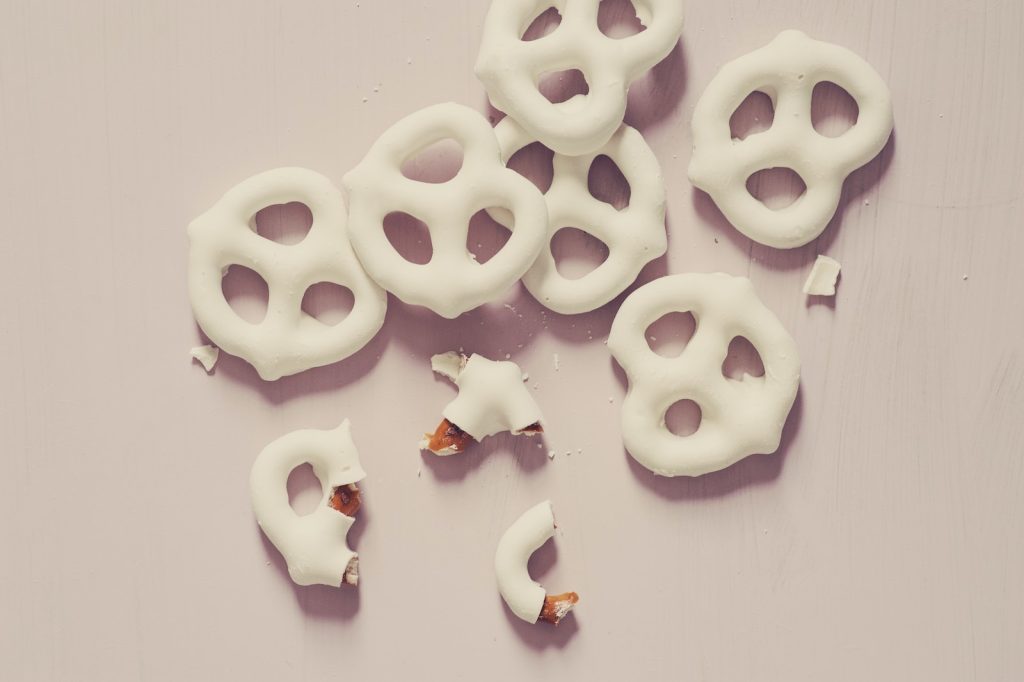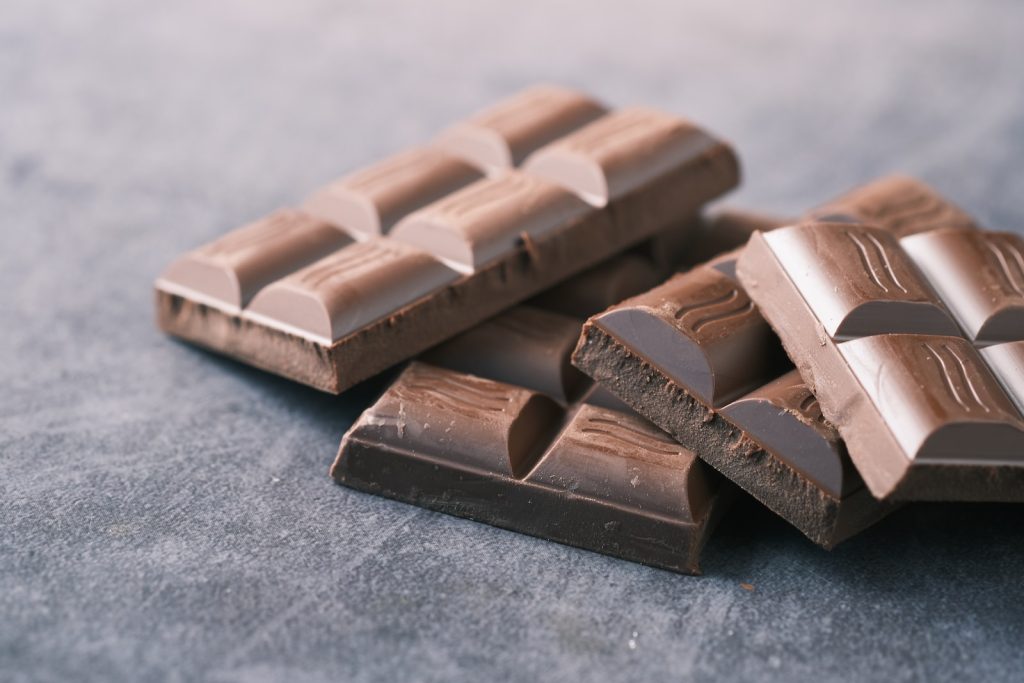[Article updated on 19/09/2023]
We have just passed the Easter period, a celebration which revolves around a flagship food: chocolate.
This is available in all its forms: from white to black, filled or plain, taking the shape of an egg, a chicken or even a bell. Yum, enough to make our mouths water!
The question you have certainly asked yourself is: what chocolate will I be able to eat without gaining weight? Which is the least caloric? Maybe you’re in a “damn for damn” mood and you’ve eaten too much?
Thanks to this article, I will enlighten you on the wisest choice of chocolate to make in order to combine pleasure, indulgence, tasting and no hassle!
The history of chocolate
Let’s start with some interesting explanations.
Chocolate originated in Central and South America, where it was considered a sacred food by the ancient Mayan and Aztec civilizations. Cocoa beans were used as currency and chocolate was often served as a bitter drink during religious ceremonies.
Europeans discovered chocolate in the 16th century and began importing it to Europe to make a sweet drink.
In the 19th century, chocolate production was industrialized and candy bars were introduced.
Today, chocolate is one of the most popular treats in the world and there are many different types to suit everyone’s tastes.
Below we will explore the different types of chocolates.
White chocolate
White chocolate is made from cocoa butter, sugar and milk. It does not contain cocoa solids so it does not have the characteristic flavor of dark chocolate or milk chocolate. White chocolate is often used for icings, toppings and desserts.
It is less rich in antioxidants and other beneficial nutrients than dark or milk chocolates.
Additionally, it is often higher in sugar and fat than other types of chocolate, which can contribute to excessive calorie consumption.
Due to its sugar content, white chocolate should be consumed in moderation, a pleasure food in its own right!

Milk chocolate
Milk chocolate is a mixture of dark and milk chocolate. It is softer and creamier than dark chocolate due to the milk content.
Milk chocolate is the most popular type of chocolate worldwide and is often used for chocolate bars and candies.
It is generally less rich in cocoa than dark chocolate and contains a greater amount of milk and sugar.
Its nutritional quality can be observed to be less good than that of dark chocolate. However, milk chocolate can still be a source of health-promoting nutrients, such as vitamins and minerals found in milk. It is also rich in antioxidants, although in lower proportions than dark chocolate.
As with all sweet foods, it is important to consume milk chocolate in moderation as part of a balanced diet.

Dark chocolate
Dark chocolate is made from roasted cocoa beans that are ground and mixed with sugar and cocoa butter. It is more bitter than other types of chocolate due to its high cocoa content (70% or more). It is also considered to be healthier than other types of chocolate because it contains less sugar (but be careful, it does not have fewer calories!)
Dark chocolate is generally rich in cocoa, contains little sugar but more added fat.
Cocoa is rich in antioxidants that can help protect body cells.
Dark chocolate also contains minerals such as iron, magnesium and zinc. However, it is important to note that dark chocolate can be high in calories and should also be consumed in moderation.
Dark chocolate varieties with a higher cocoa content may also contain a higher amount of caffeine.

Flavored chocolate
Flavored chocolate is often used to add unique flavors to chocolate. Flavors can be fruit (raspberry, orange), nuts (almond, hazelnut) or spices (cinnamon, mint). Flavored chocolate can be found in many forms, including candy bars, truffles, and candies.
Which one to consume?
Ultimately what matters is not so much which one is the least caloric or the most nutritionally interesting but rather which one will give you the most taste pleasure.
Chocolate remains a food from the sweet family, to be consumed in moderation.
If you do not feel frustration/guilt when eating your chocolate (regardless of its color) then it will be tasted and consumed in moderate quantities, healthy for your health and your morale!
Don’t forget the pleasure of eating
The pleasure of eating is a multisensory experience that encompasses sight, smell, taste, texture and even sounds. It is an experience that goes beyond simply satisfying hunger and contributes to physical and emotional well-being.
Enjoyment of eating can be enhanced by paying attention to the texture and temperature of the foods you consume.
Eating mindfully and taking the time to savor each bite enhances the pleasure of eating.
It is important to note that the pleasure of eating should not be confused with overeating or excessive consumption.
Eating attentively, without external distraction, taking the time to chew well, will allow you to better manage the quantities you ingest since you will give your stomach time to send the information to the brain that it has eaten enough.
Happy tasting to you!
